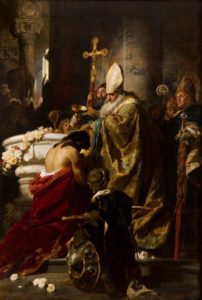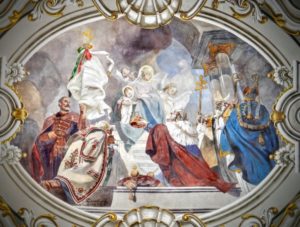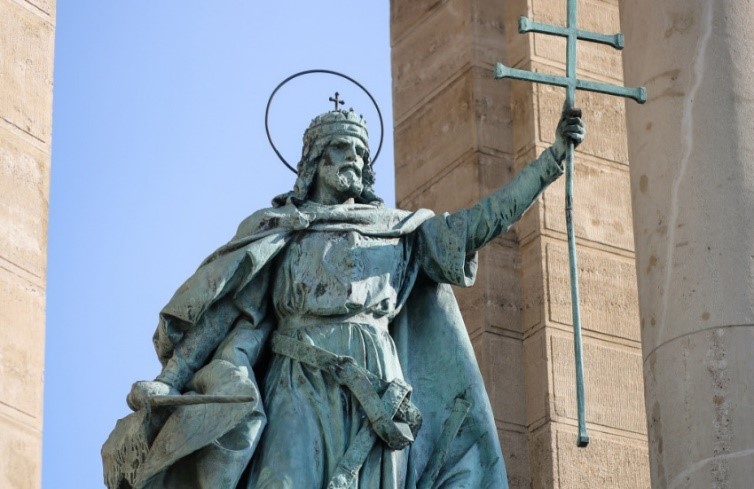We salute the greatest statesman of Hungarian history on this day, precisely because on August 20, 1083, István was elevated to the altar with papal permission. This was then equivalent to canonization.
Géza, in order to ensure the acceptance of Christianity and the related Western orientation, and to consolidate the power of his house, excluded his competitor, Koppány, from inheriting the throne, and nominated his son István, who was small in stature, but far outstanding in character, courage and standing, as his successor. He invited Bishop Adalbert from Prague to deepen the conversion. Adalbert confirmed the young prince.

Gyula Benczúr: The Baptism of Vajk
The young heir to the throne assumed power in 997 when his father died. From a political, religious and social point of view, he created Hungary, he appointed and ensured the path to the future for his people.
He also created the Hungarian Catholic Church. He invited monks and priests from Bavaria, the Czech Republic, and Italy. He founded an abbey on St. Martin's Hill (Pannonhalmán). He established many monasteries, which became mission centers and focal points of religious and cultural life. István ordered the sanctification of Sunday and the construction of a church for every ten villages. At his own expense, he built a cathedral near his palace in Esztergom, a women's abbey in Veszprém, and built the St. Peter and St. Paul Church in Buda. István made the Christian Hungarian spirit present abroad: he had a Benedictine monastery built in Jerusalem, a pilgrimage house in Rome, and an ornate church in Constantinople.
István was anointed and crowned king in Esztergom on Christmas of the year 1000. This was equivalent to raising him to the dignity of a sovereign king and recognizing his apostolic mission. Relying on the privilege he received from the Pope, he gave his empire a solid ecclesiastical organization: he divided his country into ten bishoprics, among which he founded two archbishoprics in Esztergom and Kalocsa.
His spiritual image in Intelmek , which was written for his son, Prince Imre. Among other things, the following ruling rules can be found in it: "Rule meekly, humbly, peacefully, without anger and hatred! The most beautiful jewels in the king's crown are good deeds; it is fitting that the king should be adorned with justice and mercy and the other Christian virtues. Every nation lives by its own laws; give the country the freedom to live by it!”
Our holy king died at the age of nearly seventy, after forty-two years of reign, on August 15, 1038, the day of Mary's Assumption. Before his death, he dedicated the country to the Virgin. This is how the mother of Christ became the great lady of the Hungarians.
 Offering of the country of St. István (ceiling fresco of the Oslo Cathedral)
Offering of the country of St. István (ceiling fresco of the Oslo Cathedral)
On August 20, 1083, King Saint László raised István to the altar, together with Imre and his tutor, Gellért, with papal permission, in the presence of Hungarian bishops, abbots and dignitaries. This was then equivalent to canonization.
István's respect soon spread beyond the borders of the country. XI. In November 1686, on the occasion of the recapture of Buda, Pope Ince extended his holiday on September 2 to the entire church. Today, the world church celebrates it on August 16, and the Hungarian church on August 20 . On this day, after the celebratory mass, the intact right hand of our holy king, the most revered and symbolic relic of Hungarians, the Holy Right Hand, is carried in a solemn procession around the St. Stephen's Basilica every year.
Source: Hungarian Courier













